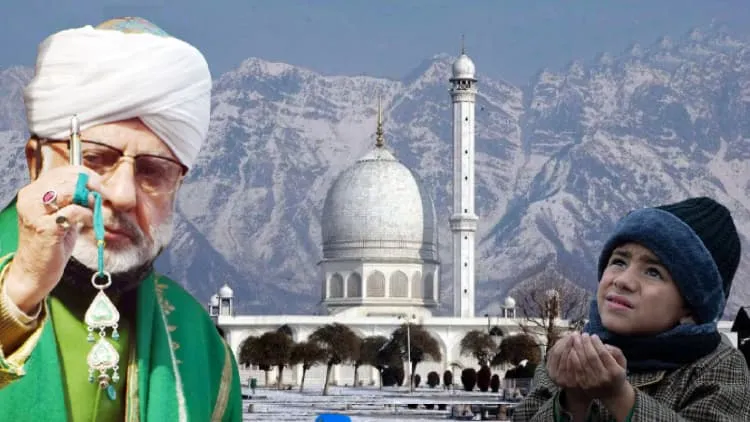
Ehsan Fazili/Srinagar
One of the largest congregations on Eid-e-Milad, the birth anniversary of Prophet Mohammad, across the Kashmir Valley will be held on Tuesday at Hazratbal Shrine, where the caretaker displays a revered relic of the Prophet to the devout after each Namaz.on this aspicious day.
Located on the banks of Dal Lake, the Hazratbal Shrine has been lit up for the festival that sees people from across the Valley coming to have a view of the holy relic – a hair strand of the Prophet encased in a glass casket. For two days the holy relic will be displayed for the public after every Namaaz.
This most revered Muslim shrine in Srinagar spread over the western ghat of the lake and has been developed into an enchanting locale over the years. Combined with the scenic splendor of the lake and the Naseem Bagh campus of the University of Kashmir, located right across the shrine, Hazratbal is also visited by lakhs of tourists.
History has it that the holy relic was brought to India by Syed Abdullah Madani, a purported descendant of the Prophet Muhammad who left Madina and settled in Bijapur, Karnataka, in 1635.
After Abdullah's death, his son Syed Hameed inherited the relic. As the region was conquered by the Mughals shortly afterward and Hameed was stripped of his family estates, he found it difficult to protect the relic and therefore passed it on to Khwaja Nur-ud-Din Eshai, a leading businessman of Kashmir.
Again, the Mughal emperor, Aurangzeb came to know about the relic. He imprisoned Eshai and handed over the relic to Sufi mystic Khwaja Moinuddin Chisti in Ajmer. Somehow, Aurangzeb had a change of heart within a week and he decided to release Eshai and return the Holy relic to him.
As luck would have it Eshai had died in jail. “By 1700, the relic had been transported to Kashmir where Inayat Begum, the daughter of Eshai, became its custodian. She established a shrine to house the relic.
Since then, her male descendants – known by the surname Bandey - have been caretakers of the relic at the mosque.
The holy relic had gone ‘missing’ in December 1963 and this kicked off massive public unrest and riots in Kashmir.
As the Radio Kashmir, Srinagar, (All India Radio, Srinagar) broke the news about the relic having disappeared from its vault in the Hazratbal shrine on December 27, 1963, Kashmiris in towns and villages were out in streets protesting and wailing.
‘Prime Minister’ Khwaja Shams-ud-Din announced a reward of Rs One lakh for providing information regarding the missing relic. For four days Kashmir burned with rage and anger of the public.
Prime Minister Jawaharlal Nehru sent the chief of the Central Bureau of Investigation (CBI), BN Mullick, to Srinagar to investigate the matter. Finally, news of the recovery of the holy relic was announced on January 4, 1964.
The Hazratbal shrine was first constructed by Mughal Emperor Shah Jehan in 1634. He called it Ishrat Jahan (pleasure house). It was ordered to be a prayer hall.
The present magnificent white marble edifice shrine was constructed by the Muslim Auqaf Trust under the supervision of Sheikh Mohammad Abdullah. It was again renovated and domes were added to the complex between 1968-79.
